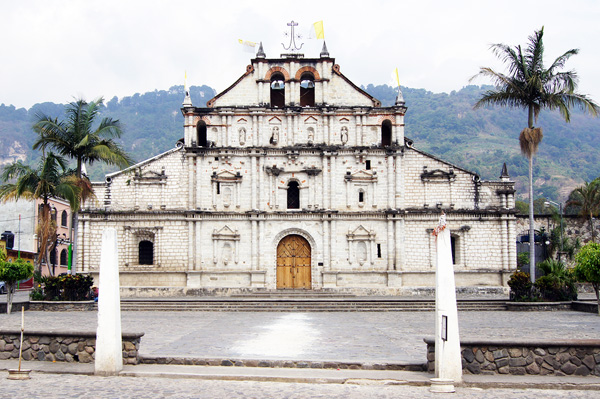Public Transportation in Lake Atitlan
Summary: Learning how to get around using public transportation in Lake Atitlan is an important step in adjusting to life in Lake Atitlan. In this article, we cover the local public transportation options.

Public transportation in Lake Atitlan is a unique experience that is both affordable and efficient. The main forms of public transportation available are the chicken buses, tuk-tuks, and boats. Each of these modes of transport offers a different perspective of the beautiful landscapes and vibrant culture of Lake Atitlan. For an expat living in Lake Atitlan, it is entirely possible to live comfortably without a car, relying on these public transportation systems and walking. However, it's important to note that each form of transport has its own quirks and characteristics.
Chicken Buses
Chicken buses, or "camionetas" as they are locally known, are a common sight in Guatemala. These are brightly colored, repurposed American school buses that serve as the primary mode of land transportation. They are named so because of the possibility of sharing your ride with local farmers' livestock. Chicken buses are safe to use during the day, but it's advisable to avoid them at night due to the risk of robberies. The cost is very affordable, with fares usually under 10 Quetzales (around $1.30). The routes are extensive, covering most of the towns around Lake Atitlan. However, they can be crowded and the ride can be bumpy due to the hilly terrain.
Tuk-Tuks
Tuk-tuks are small, three-wheeled motorized vehicles that are perfect for short distances within towns. They are safe, even for women traveling alone, and are a common mode of transport for children going to school. The cost is usually around 5 Quetzales (around $0.65) for a short ride within town. However, it's important to agree on the fare before starting the journey as some drivers may try to overcharge tourists. Tuk-tuks are a fun and convenient way to get around, offering a close-up view of the local life.
Boats
Boats, or "lanchas", are the primary mode of transportation between the various towns around Lake Atitlan. They are safe and reliable, offering stunning views of the lake and surrounding volcanoes. The cost varies depending on the distance, but a one-way trip usually costs between 10 to 25 Quetzales (around $1.30 to $3.25). The boats operate from early morning until late afternoon. It's a unique and enjoyable way to travel, but it's advisable to carry a rain jacket as it can get wet during the ride.
In conclusion, public transportation in Lake Atitlan is not only feasible but also adds to the overall experience of living in this beautiful part of Guatemala. Whether it's the colorful chicken buses, the buzzing tuk-tuks, or the scenic boat rides, each mode of transport offers a unique perspective of the local culture and landscape. So, for an expat living in Lake Atitlan, there's no need for a car when you have these affordable and efficient options at your disposal.
About the Author
 Betsy Burlingame is the Founder and President of Expat Exchange and is one of the Founders of Digital Nomad Exchange. She launched Expat Exchange in 1997 as her Master's thesis project at NYU. Prior to Expat Exchange, Betsy worked at AT&T in International
and Mass Market Marketing. She graduated from Ohio Wesleyan University
with a BA in International Business and German.
Betsy Burlingame is the Founder and President of Expat Exchange and is one of the Founders of Digital Nomad Exchange. She launched Expat Exchange in 1997 as her Master's thesis project at NYU. Prior to Expat Exchange, Betsy worked at AT&T in International
and Mass Market Marketing. She graduated from Ohio Wesleyan University
with a BA in International Business and German.
Some of Betsy's articles include 12 Best Places to Live in Portugal, 7 Best Places to Live in Panama and 12 Things to Know Before Moving to the Dominican Republic. Betsy loves to travel and spend time with her family. Connect with Betsy on LinkedIn.
Additional Information:
- Expat Guide to Lake Atitlan
- Healthcare & Health Insurance in Lake Atitlan
- Public Transportation in Lake Atitlan
- Pros & Cons of Living in Lake Atitlan
- Best International Schools and Bilingual Schools in Lake Atitlan
- 7 Weekend Getaways for Digital Nomads Living in Lake Atitlan
- Public Transportation in Lake Atitlan
- Best Markets in Lake Atitlan
- Retire in Lake Atitlan Guide
- 7 Tips for Living in Lake Atitlan
- Pros & Cons of Living in Lake Atitlan
- Cost of Living in Lake Atitlan
- Health Care in Lake Atitlan
- The Essential Guide to Lake Atitlan
- Healthcare & Health Insurance in Guatemala
- Best Places to Live in Guatemala
- Real Estate in Guatemala
- Top Hospitals in Guatemala by Specialty
- What It's Like Living in Lake Atitlan
- Pros and Cons of Living in Guatemala 2025
- 2025 Guide to Moving to Guatemala



